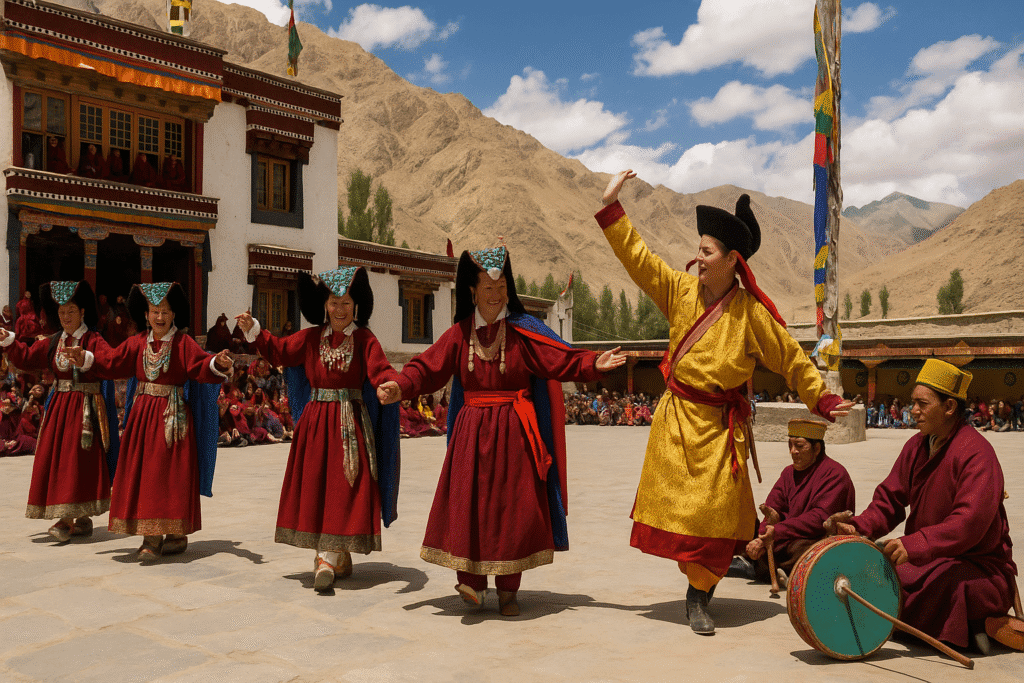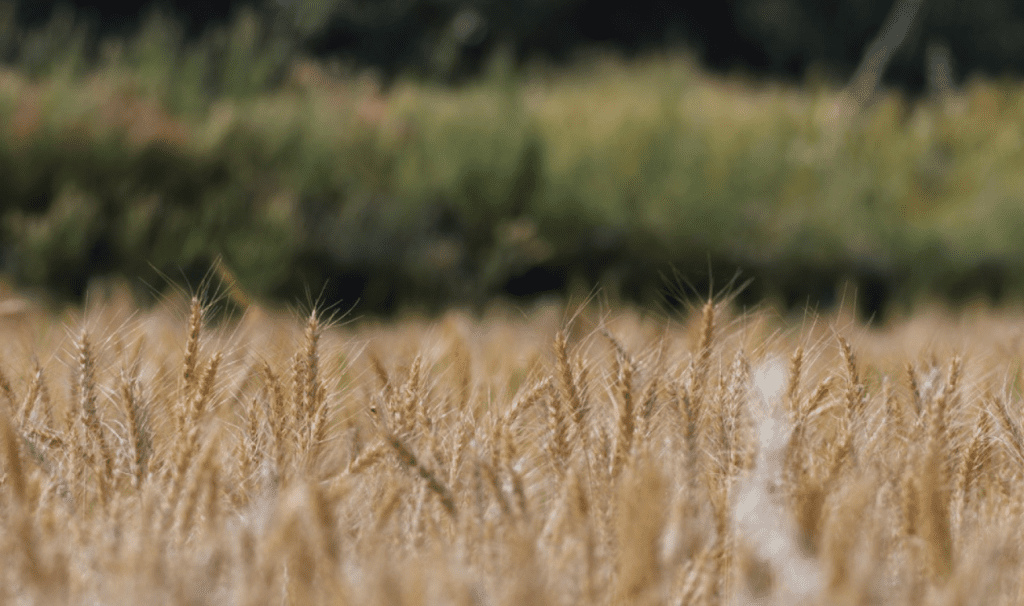Introduction
The Ladakh Harvest Festival, a dazzling celebration of agricultural abundance and cultural heritage, transforms the rugged landscapes of Ladakh into a vibrant tapestry of music, dance, and tradition. Organized annually by the Jammu & Kashmir Tourism Department, this 15-day extravaganza, typically held from September 1 to 15, showcases the rich diversity of Ladakhi communities. Centered in Leh, with festivities spilling into Kargil and Zanskar, the festival honors the harvest season—a critical time in this high-altitude desert where farming is both a livelihood and a cultural cornerstone. This article explores the festival’s origins, rituals, and modern significance, offering a fresh perspective on its role in uniting communities and promoting Ladakh’s unique identity.
Historical and Cultural Roots
Origins in Ladakh’s Agrarian Life
Ladakh’s harsh climate and sparse arable land make agriculture a revered practice, with barley, wheat, and apricots as staple crops. The Harvest Festival emerged from ancient traditions of giving thanks for successful harvests, rooted in the region’s Buddhist and animist beliefs. Farmers historically consulted astrologers and offered prayers to pacify natural elements, ensuring future prosperity. The modern festival, formalized in the late 20th century, builds on these practices, blending them with Tibetan, Central Asian, and North Indian influences to create a cultural spectacle.
A Showcase of Ladakhi Identity
The festival is a vibrant expression of Ladakhi identity, uniting diverse ethnic groups like the Balti, Changpa, and Brokpa. It celebrates the region’s Buddhist heritage through monastic dances and rituals, while also highlighting secular traditions like polo and archery. Held across Leh’s markets, monasteries, and polo grounds, the festival fosters a sense of pride and continuity, preserving customs in a rapidly modernizing world. Its inclusivity—drawing participants from villages and monasteries alike—reflects Ladakh’s ethos of harmony.
Spiritual and Social Significance
Gratitude for Nature’s Gifts
At its core, the Ladakh Harvest Festival is a heartfelt thanksgiving for the land’s bounty. Monks perform prayers to honor deities and appease elemental forces, ensuring fertile fields for the coming year. Rituals, such as piling stones to cast shadows for agricultural timing, connect the festival to ancient wisdom. These spiritual practices resonate with Ladakh’s Buddhist philosophy, emphasizing interdependence with nature and gratitude for sustenance.
Uniting Communities
The festival serves as a social glue, bringing together Ladakh’s scattered villages in a shared celebration. Cultural troupes, adorned in ceremonial costumes, perform folk dances and songs, while locals and tourists mingle at markets and events. Activities like the “Ladakh Festival Cup” polo tournament and archery contests foster camaraderie, with men and women participating in distinct roles—archery for men and dances for women. The festival’s reach into Kargil and Zanskar amplifies its role in promoting regional unity.
Rituals and Traditions
The Grand Procession
The festival kicks off with a spectacular procession through Leh’s main market, ending at the polo ground. Cultural troupes, dressed in vibrant gonchas (traditional robes) and heavy silver jewelry, perform folk dances to the beat of drums and surna (oboe-like instruments). Lamas from monasteries like Hemis and Thiksey perform cham (masked dances), enacting tales of good triumphing over evil. This opening parade sets a joyous tone, blending sacred and secular elements.
Cultural Performances and Competitions
Over 15 days, the festival hosts a range of activities:
- Masked Dances: Monks in silk robes and hand-painted masks perform cham, depicting Buddhist narratives. These dances, rooted in Tantric traditions, are both spiritual and theatrical.
- Folk Music and Theatre: Local artists sing ballads and stage dramas, narrating Ladakhi legends and daily life. Instruments like damnyan (stringed) and piwang (shehnai) create a soulful ambiance.
- Polo and Archery: The “Ladakh Festival Cup” polo tournament, a nod to Ladakh’s Central Asian ties, thrills crowds, while archery contests showcase precision and tradition.
- Wedding Ceremonies: Mock weddings, complete with traditional attire and rituals, highlight Ladakhi matrimonial customs, adding a festive charm.
Markets and Culinary Delights
The Central Asian trade mart in Leh Bazaar buzzes with stalls selling thangkas (Buddhist paintings), handicrafts, and woolen garments. Food festivals offer thukpa (noodle soup), tsampa (roasted barley flour), and chang (barley beer), alongside fresh harvest produce like apricots and organic vegetables. These markets celebrate Ladakh’s culinary and artistic heritage, drawing foodies and artisans alike.
The Festival Across Ladakh
Celebrations in Leh
Leh, the festival’s epicenter, hosts the main events, with monasteries, markets, and polo grounds transformed into vibrant venues. The final carnival parade through Leh’s streets, featuring cultural troupes and monastic dancers, is a highlight, drawing thousands of spectators. The city’s accessibility, with Kushok Bakula Rimpochee Airport nearby, makes it a hub for tourists seeking an immersive cultural experience.
Kargil and Zanskar Extensions
In Kargil, the Srub-La Festival, held in villages like Bodhkharboo, complements the Harvest Festival, featuring Balti ghazals, Shontsas dances, and folk songs. Organized by the Ladakh Cultural Academy, it honors farmers and promotes folk arts through the Guru-Shishya tradition. Zanskar’s celebrations, though smaller, include similar dances and feasts, connecting remote communities to the broader festival spirit.
Modern Adaptations and Challenges
Promoting Cultural Tourism
The festival’s alignment with tourism, driven by the Jammu & Kashmir Tourism Department, has globalized Ladakh’s heritage. Events like handicraft exhibitions and food festivals attract international visitors, boosting local economies. However, balancing tourism with authenticity remains a challenge, as commercialization risks diluting traditions. Efforts to involve local communities ensure the festival retains its cultural soul.
Environmental and Social Concerns
Ladakh’s fragile ecosystem demands eco-conscious celebrations. Initiatives like waste management and promoting organic produce during the festival align with sustainability goals. Socially, the festival navigates tensions between modernization and tradition, with leaders urging youth to preserve practices like cham dances. Maintaining inclusivity across ethnic groups, as emphasized by leaders like Mohd Jaffer Akhoon, strengthens its unifying impact.
Lessons from the Ladakh Harvest Festival
Gratitude and Sustainability
The festival’s rituals, from prayers to organic feasts, underscore gratitude for nature’s gifts, offering lessons in sustainable living. In a world grappling with climate change, Ladakh’s reverence for its land inspires eco-friendly practices, encouraging communities to prioritize environmental stewardship.
Cultural Resilience
By showcasing diverse traditions—Buddhist, Balti, and Central Asian—the festival celebrates cultural resilience. Its ability to adapt, incorporating concerts and trade marts while preserving monastic dances, teaches the value of balancing heritage with progress. This resilience inspires global communities to safeguard their identities amid globalization.
The Festival’s Role in Tourism
The Ladakh Harvest Festival is a cultural tourism magnet, offering immersive experiences like monastery visits, homestays, and chang tastings. Its September timing, post-monsoon, aligns with pleasant weather, drawing adventurers and culture enthusiasts. Promoting the festival through platforms like Leh Ladakh India could elevate its global profile, supporting artisans and farmers while showcasing Ladakh’s unique charm.
Conclusion
The Ladakh Harvest Festival is a radiant celebration of abundance, culture, and unity, transforming the stark landscapes of Leh, Kargil, and Zanskar into a vibrant stage. From masked dances to polo tournaments, it weaves together Ladakh’s Buddhist heritage, agrarian roots, and diverse traditions, fostering pride and connection. As it navigates modern challenges, the festival remains a testament to resilience and gratitude, inviting the world to witness Ladakh’s soul. Let us embrace its spirit, celebrating the harvest and the enduring bonds that sustain this land of high passes.



